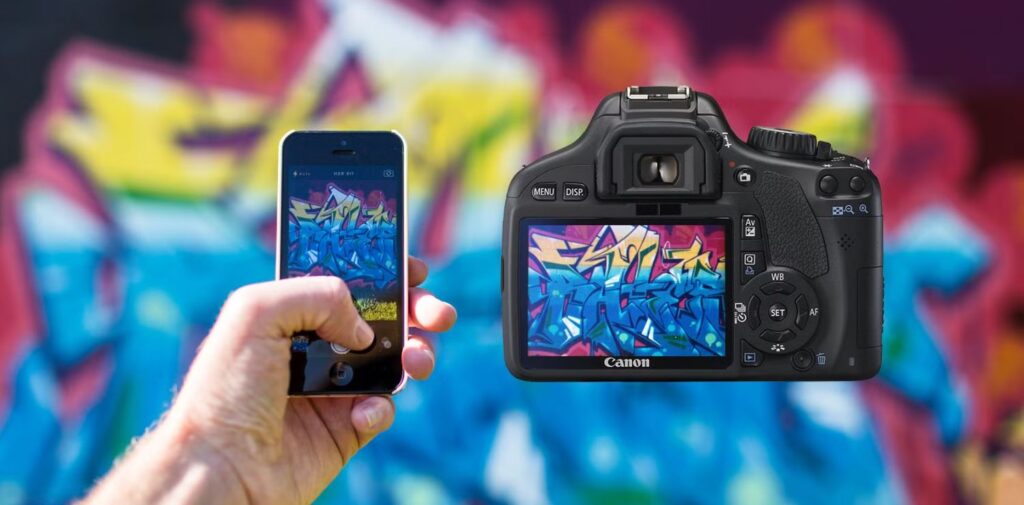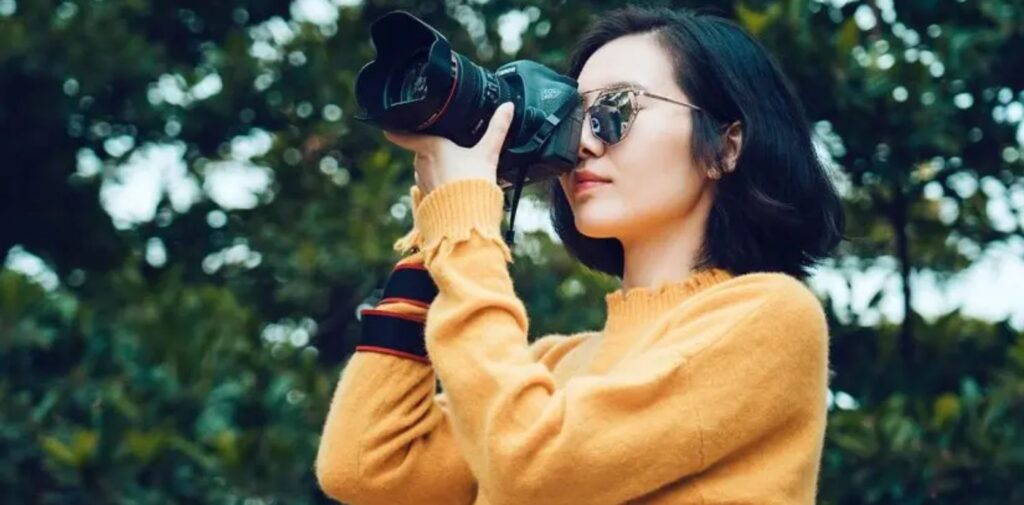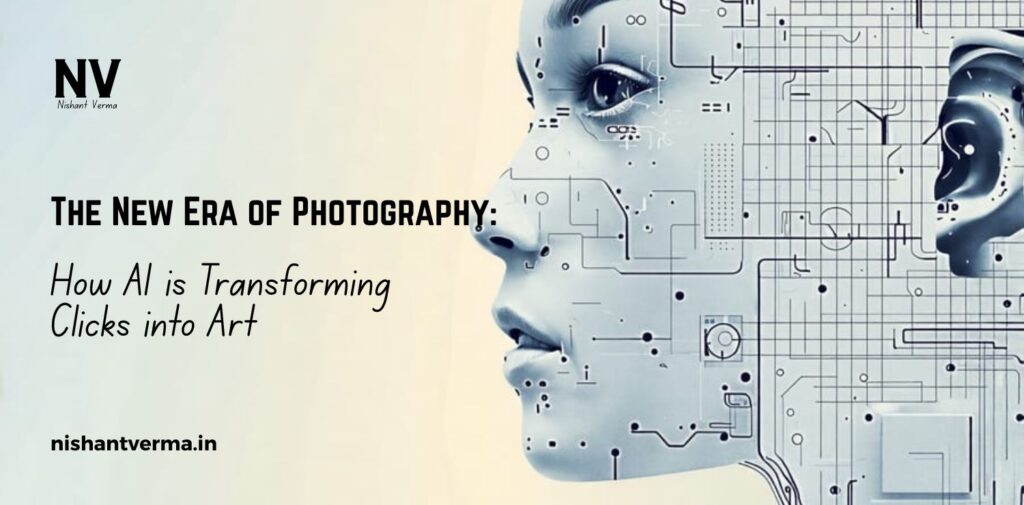In the past, photography was all about having the best camera, waiting for the perfect light, and learning the right skills to capture a beautiful moment. But things have changed rapidly in the last few years. Today, even a smartphone in your hand can take professional-looking pictures, all thanks to Artificial Intelligence (AI). AI is not just a buzzword anymore—it’s silently working behind the scenes, transforming how photos are taken, edited, and even imagined.
Let’s explore how AI is changing the landscape of photography, especially in the Indian context, where creativity and technology are blending in unique ways.

Smartphones Are the New DSLRs
A few years ago, you needed a bulky DSLR camera to click high-quality pictures. But now, smartphones like the latest iPhones, Google Pixels, and Indian favorites like Xiaomi and Vivo are loaded with AI-based camera features. These phones use AI to understand the scene in front of them—whether it’s a sunset in Goa, a street in Old Delhi, or a family function at home.
AI helps adjust the brightness, color, contrast, and even removes unwanted shadows automatically. It also improves portrait shots by detecting faces and blurring the background in real-time. Many phones even have “night mode” powered by AI that can brighten photos taken in low light, which is great for clicking those Diwali night selfies or wedding sangeet photos without extra lighting.
Editing Made Effortless
Earlier, editing a photo used to be a skill only professional photographers or graphic designers had. People used apps like Photoshop which required learning and practice. But now, AI-based apps like Snapseed, Adobe Lightroom Mobile, and even Instagram filters are doing the hard work for you.
With one tap, these apps can enhance a photo, remove blemishes, adjust lighting, or even change the entire background. AI tools can detect objects and people in a photo and suggest edits automatically. Some apps like Remini or Photoleap can even turn old, blurry pictures into sharp HD versions, which is very useful for people who want to restore family photos or childhood memories.
For Indian users who are not always tech-savvy, these easy-to-use tools have opened new doors to creativity. Whether it’s for social media, family albums, or even small business promotions, people can now create professional-level visuals without needing expert help.
AI-Generated Images and the Rise of Creative Freedom
Another fascinating development in photography is AI-generated images. Tools like DALL·E, Midjourney, and others can now create realistic images just from text prompts. For example, you can type “a couple sitting in front of Taj Mahal at sunset,” and the AI can create a brand new photo-like image that doesn’t even exist.
This is useful for designers, content creators, and even wedding photographers who want to offer something extra to their clients. In India, where there’s a huge demand for creative pre-wedding photoshoots and cinematic visuals, these AI-generated photos open up endless possibilities.
People can create fantasy themes, Bollywood-style backdrops, or even traditional scenes that are hard to capture in real life. And this can all be done sitting at home, with zero travel or heavy investment.

Helping Professional Photographers, Not Replacing Them
A common fear is that AI will take over jobs, including those of photographers. But in reality, AI is becoming more of a supportive tool than a replacement. Professional photographers in India are using AI to save time on editing, manage thousands of images from events, and even sort photos based on quality.
For example, a wedding photographer covering a big fat Indian wedding may take thousands of photos in a day. AI tools like Imagen AI or Aftershoot can automatically pick the best photos, sort them, and apply basic edits, saving hours of manual work.
This allows photographers to focus more on creativity and building client relationships, instead of getting stuck with technical tasks. Even in sectors like wildlife photography, AI is helping analyze animal movement, lighting conditions, and best timings to shoot, which was never possible before.
Bringing Accessibility and Empowerment to All
One of the best things about AI in photography is how it empowers people who never thought they could be photographers. Today, a student in a small town in Bihar, a homemaker in Kerala, or a young creator in a village near Jaipur can all experiment with photography using a basic smartphone and free AI tools.
There are even AI features that assist visually impaired people in understanding their photos, describing what’s in them, and guiding them in framing a shot. This inclusion is very important in a country like India, where access to resources is often limited but talent is abundant.
Moreover, small business owners are using AI-based photography to market their products better. A mithai shop owner can take a simple photo of sweets and use AI tools to enhance lighting and colors before uploading it to Swiggy or Instagram, making the product look tempting and professional.

Ethical Concerns and the Need for Balance
While AI brings many benefits, it also raises some important questions. Deepfake images, fake photo edits, and copyright concerns are increasing. For example, someone can take your photo from social media and use AI to create fake images that look real. This can cause personal and legal issues.
There’s also a growing concern about originality. If everything can be generated or edited by AI, where is the line between art and automation?
India is slowly working on digital laws and awareness to address such issues. As users, we also need to be more responsible in how we use AI tools, especially while sharing or modifying someone else’s image.
The Future of Photography in India with AI
India is a land of stories, emotions, colors, and festivals. Photography plays a big role in capturing all this. With AI becoming more advanced and accessible, photography is no longer just for the privileged few. It’s becoming a part of everyday life—from documenting our food to preserving family memories to building careers on social media.
The future will see even more exciting innovations. Imagine real-time translations of signboards in travel photos, or AI suggesting the best frame during a Ganpati visarjan or Holi celebration. It’s already happening, and the journey has just begun.
In the end, AI is not just changing photography—it’s changing the way we see the world. And in a vibrant country like India, this change is both powerful and beautiful.




